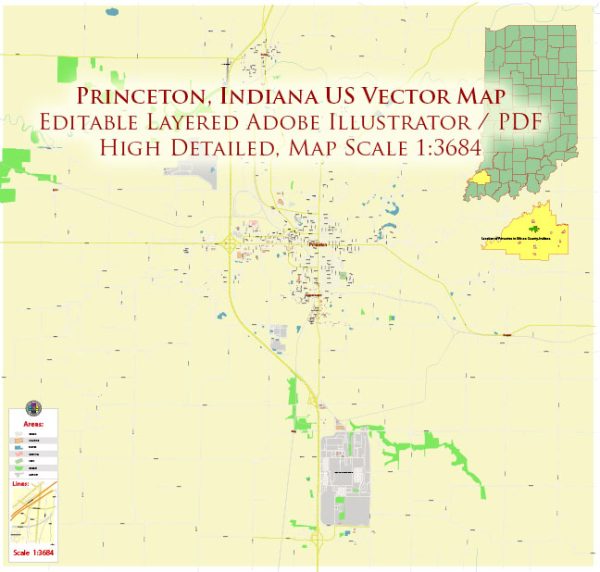Princeton, Indiana, like many small towns across the United States, has a rich history that reflects the broader narrative of American settlement and development. Here is a brief description of Princeton’s history in the context of U.S. history:
- Early Settlement: Princeton was originally settled in the early 1800s by European-American pioneers who were attracted to the area’s fertile land. The town’s growth was driven by agriculture and the presence of abundant natural resources.
- Native American History: Before European settlement, the region was inhabited by various Native American tribes, including the Miami and Shawnee. The interaction and conflicts between these tribes and European settlers were part of the broader pattern of Native American displacement in U.S. history.
- Role in the Civil War: Princeton and the surrounding area played a significant role in the American Civil War. Indiana was a Union state during the conflict, and many local residents enlisted in the Union Army. Princeton served as a staging area for troops and a center for war-related activities.
- Industrialization: The late 19th and early 20th centuries saw the expansion of industry in Princeton. The arrival of the railroad facilitated the transportation of goods, and the town became a hub for coal mining, agriculture, and manufacturing.
- Notable Residents: Over the years, Princeton has been home to several notable individuals, including Olympic gold medalist Bob Beamon and astronaut Frank Borman.
- Education and Culture: Princeton has a history of emphasizing education and culture. Princeton Community High School, for instance, has a long-standing tradition of academic and athletic excellence. The town also hosts cultural events and festivals that celebrate its heritage and community spirit.
- Modern Era: In more recent times, Princeton, like many rural communities, has faced economic challenges and population shifts. However, it remains an important part of the Midwest’s cultural and economic landscape.
- Historic Landmarks: Princeton has preserved many historic landmarks, including the Gibson County Courthouse and several well-preserved Victorian-era homes. These buildings offer a glimpse into the town’s history and architectural heritage.
- Agriculture: Agriculture continues to be a vital part of Princeton’s economy, and the surrounding area is known for its production of crops like corn and soybeans.
In summary, Princeton, Indiana’s history is intertwined with the broader history of the United States. It reflects the evolution of rural communities, their contributions to the nation, and the challenges they have faced over the years.


 Author: Kirill Shrayber, Ph.D.
Author: Kirill Shrayber, Ph.D.